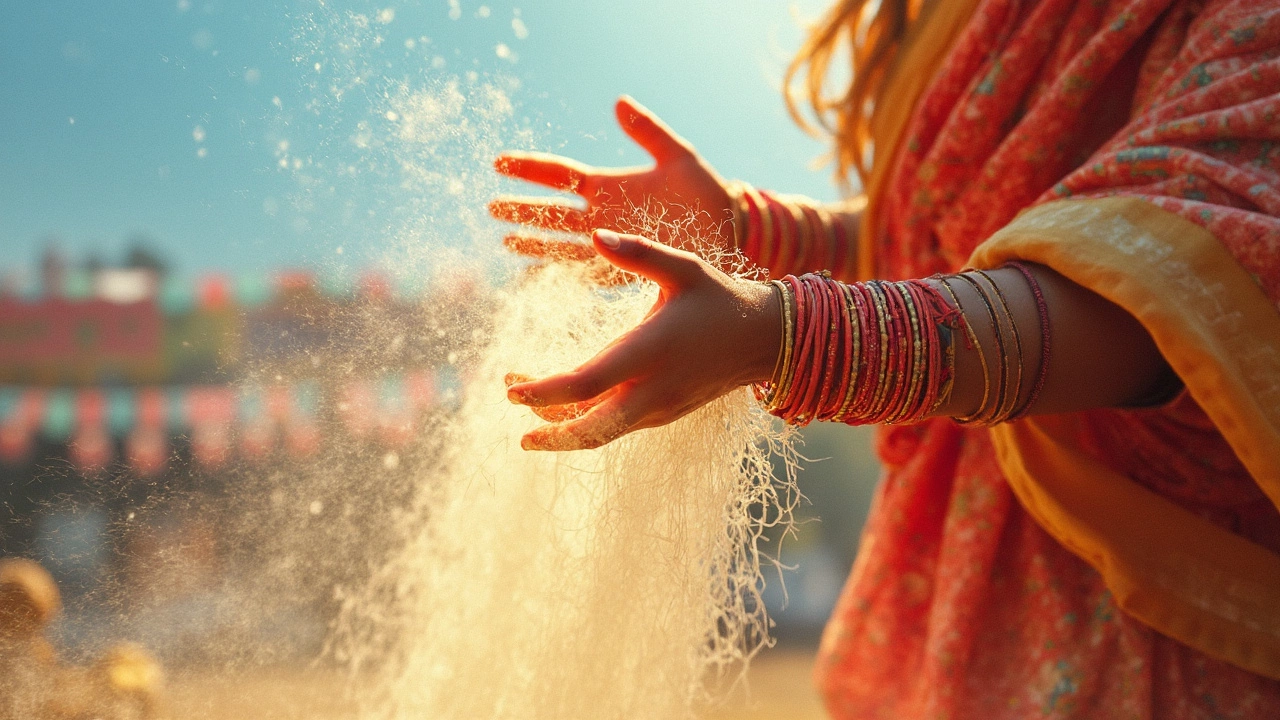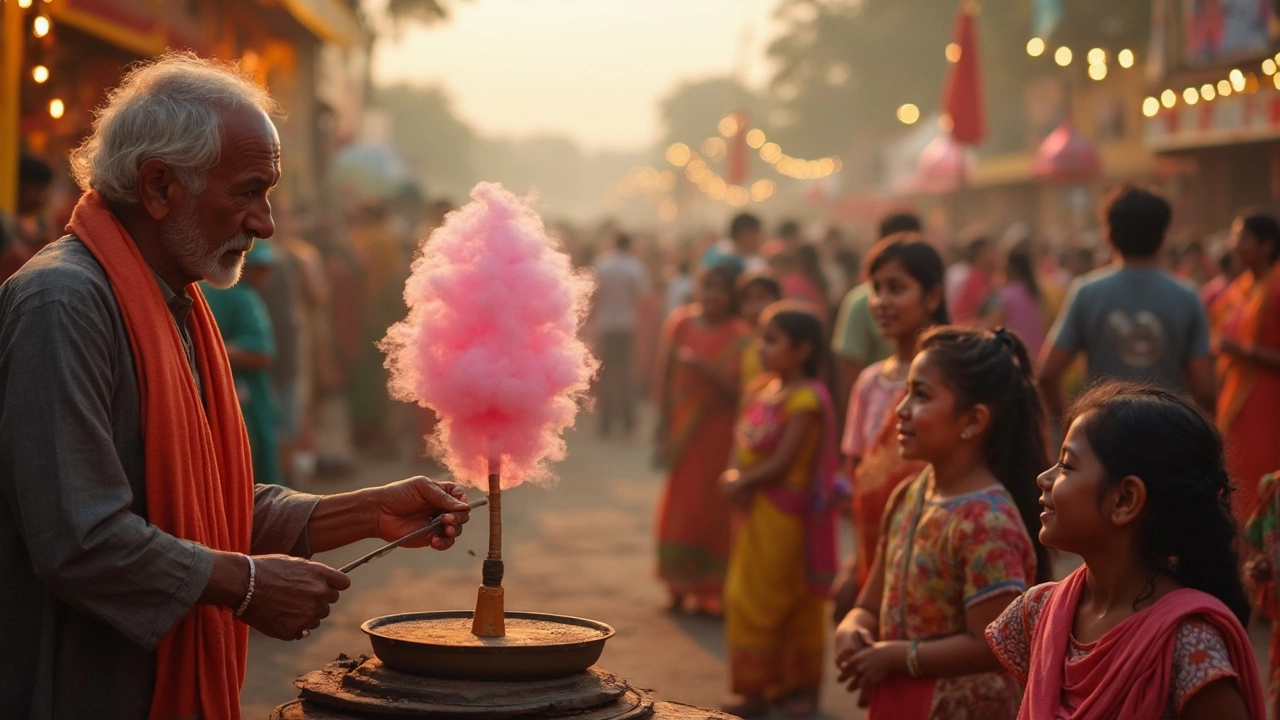That pink, fluffy stuff at the corner of every Indian fair—the one kids beg for and adults secretly love—isn’t just an imported treat. In India, candy floss has its own story, and it goes by names like buddhi ke baal (which literally means “old lady’s hair”—probably because of the way it looks, not how it tastes). If you grew up here, chances are you remember sticky fingers and the thrill of watching sugar whisk into a cloud in seconds.
It’s simple at heart: spun sugar, a touch of color, and a machine that looks a bit like a popcorn maker. The basic idea hasn’t changed much in a century. But ask anyone at a mela or school fete—there’s something magical about cotton candy getting twirled onto a stick right in front of you.
Beyond nostalgia, there’s a science to it. Ordinary sugar transforms into something totally different with just heat and movement. It’s proof that you don’t need loads of ingredients for a memorable sweet. People love it because it melts on your tongue, leaving that rush of sweetness behind.
- What Exactly Is Indian Candy Floss?
- How It's Made: Simple Magic of Spun Sugar
- Regional Flavors and Names Across India
- Tips If You Want to Make It at Home
What Exactly Is Indian Candy Floss?
Indian candy floss is basically spun sugar, but it’s more than just a sweet treat—it’s part of growing up in India. You’ll find it at fairs, outside schools, and at every festival, piled high in plastic bags that never quite contain the fluff. The Indian name is candy floss, but you’ll also hear it called buddhi ke baal in Hindi, senai in Tamil, or meetha resham in some places. The fun part is how universal it feels—almost every town has their own street vendor famous for their technique.
The dessert itself is just sugar and color, spun using a special hot machine. That’s it. Once the sugar starts melting, the machine pushes it through tiny holes in a spinning drum, so super-fine strands land on a stick or cone. It’s cheap too—a big puff usually costs Rs. 10 to 30, depending where you are.
"It’s amazing to see how something so simple can bring so many smiles. Candy floss has been a part of Indian fairs for more than 60 years," says food historian Pushpesh Pant.
Here’s a quick look at the basics behind this Indian sweet:
| What’s in it? | How is it sold? | Popular Names | Average Cost (INR) |
|---|---|---|---|
| Sugar, edible color | Bags, sticks, cones | Buddhi ke baal, senai, meetha resham, cotton candy | 10–30 |
Besides fairs, you’ll sometimes spot rainbow colors or even extra flavors, thanks to food coloring or adding a drop of rose essence. It’s always vegetarian, and it contains zero fat, though it’s obviously all sugar, so enjoy in small doses if you’re watching your health.
No fancy packaging or labels here—just nostalgia by the handful. The joy is as much about watching the candy man twist it onto the stick as eating it. Kids (and let’s be real, grown-ups too) always end up with that tell-tale pink smile.
How It's Made: Simple Magic of Spun Sugar
Making Indian candy floss looks tricky, but the science is actually simple. The main ingredient is just regular white sugar, sometimes mixed with a splash of food coloring for that classic pink or blue look. Sellers pour the sugar into a heated spinning drum. As the sugar heats up, it melts into a syrup. Then, quite suddenly, the spinning action flings the hot syrup out from tiny holes where it cools in the air and instantly forms thin threads. Those threads get collected by wrapping them around a paper cone or stick. That’s really it—sugar, heat, and spinning air do all the work.
Used at melas and parties, cotton candy machines have been around since the early 1900s. In India, street vendors sometimes use basic manual versions that run on gas burners and require a lot of elbow grease. Some big events use electric machines for bigger crowds and smoother results. Both methods use the same principle—the only difference is how fast and how much candy floss they can make at once.
Here’s a quick look at what it takes to whip up a batch:
- Set up the machine and preheat it.
- Add sugar (and color, if desired) into the center drum.
- Switch on the spinner so it heats up and starts throwing out melted sugar.
- Use a stick or cone to catch the sugar threads as they appear, turning slowly to collect a fluffy cloud.
- Serve right away—fresh candy floss tastes best.
Surprisingly, candy floss is 90% air and only about 10% sugar. That means a regular serving is not as sugar-heavy as you’d think, even though it tastes super sweet. Here’s a small table with some numbers so you know exactly what’s going on:
| Fact | Number |
|---|---|
| Average serving weight | 15 grams |
| Sugar in one serving | 13-14 grams |
| Calories per serving | 50-60 kcal |
| Time to make a cone | About 1 minute |
If you’re curious about hygiene, festival stalls often put finished candy floss in plastic bags to keep it fresh and stop it from sticking to everything. At home, you just eat it right away. Either way, it’s about the experience as much as the taste.

Regional Flavors and Names Across India
Walk into a fair or beach in India and shout, “Who wants buddhi ke baal?”—you’ll probably get a flock of kids running over. But that's just what people call it in Hindi-speaking places. Across India, this fluffy treat answers to a bunch of fun names. Down south in Tamil Nadu, folks call it “panju mittai.” In Bengal, you’ll hear “panchi mishti,” while in Maharashtra, it’s “gudiya ke baal.” The name’s always a nod to its cloud-like look—sometimes compared to dolls’ hair or wispy threads.
Now, on to candy floss flavors. Most of us remember the classic pink, but some stalls get creative. In Mumbai, you might find orange or blue candy floss thanks to food coloring and fruit essences. At Chennai’s Marina Beach, you’ll occasionally spot a pale green version flavored lightly with cardamom. I’ve even seen a vendor in Hyderabad try paan (betel leaf) flavor—definitely an acquired taste!
If you geek out on data like I do, here’s a quick snapshot of Indian candy floss’s regional editions and their quirks:
| Region | Common Name | Notable Flavors/Colors |
|---|---|---|
| North India | Buddhi ke baal | Pink, orange (with rose or vanilla essence) |
| Maharashtra | Gudiya ke baal | Pink, sometimes yellow; lemon or rose essence |
| Tamil Nadu | Panju mittai | Pink, blue, pale green; plain or cardamom |
| West Bengal | Panchi mishti | Classic pink; occasionally coconut flavor |
There’s no “standard” flavor—what you find often depends on whatever flavoring or color is cheapest and popular locally. The base is always white sugar, spun up until it turns into that airy, melt-in-your-mouth treat. If you spot a color you’ve never seen, go ahead and try it—you might discover a new favorite.
Tips If You Want to Make It at Home
Want to whip up your own candy floss at home? It’s doable, but you’ll need a bit more than just a spoon and some sugar. The biggest thing is a good-quality candy floss (cotton candy) machine. You can find small ones online, and they’re way safer and more consistent than DIY hacks using whisks or forks.
Here’s a step-by-step to get you started:
- Get the right machine: You can find home-use candy floss makers for around ₹1,500 – ₹4,000. Pick one with easy-clean parts.
- Use plain white sugar: Basic granulated sugar gives the best spin. Don’t use powdered or brown sugar—they’ll clog the machine.
- Add food-safe coloring and flavoring (if you like): A drop or two is all it takes for that classic pink or blue look. Traditional Indian vendors use rose or cardamom flavors sometimes.
- Heat up and pour in sugar: Once the machine is hot, pour in your sugar. As the sugar melts and spins out, catch it by swirling a stick or reusable chopstick around the bowl. Keep your hands clear of the machine’s center!
- Serve fresh: Candy floss starts to melt or harden if left out. Make it right before eating. If you need to store, wrap it airtight, but even then, the fluffiness won’t last long in Indian humidity.
Here’s something cool: you only need about a tablespoon of sugar to make a HUGE ball of candy floss. That explains why kids eat mountains of it but barely get a sugar rush!
| Stuff You Need | Approx. Amount |
|---|---|
| Candy floss machine | 1 |
| Granulated sugar | 1-2 tablespoons per serving |
| Food coloring/flavor | 1-2 drops (optional) |
| Bamboo stick/chopstick | 1 per serving |
Safety first: The machine gets HOT—let it cool before cleaning. And, yes, sugar might splatter, so wear a kitchen apron.
If you’re worried about the process, know that making candy floss has been around since 1897, when a dentist (of all people!) invented the first electric machine. As famous Mumbai chef Ranveer Brar puts it,
“There’s a sense of theatre to Indian candy floss—watching it spin and puff, it turns a few rupees’ worth of sugar into a burst of childhood happiness.”
So give it a try for your next birthday party or get-together. It’s a sweet trick anyone can master at home with a little patience and the right gear.
